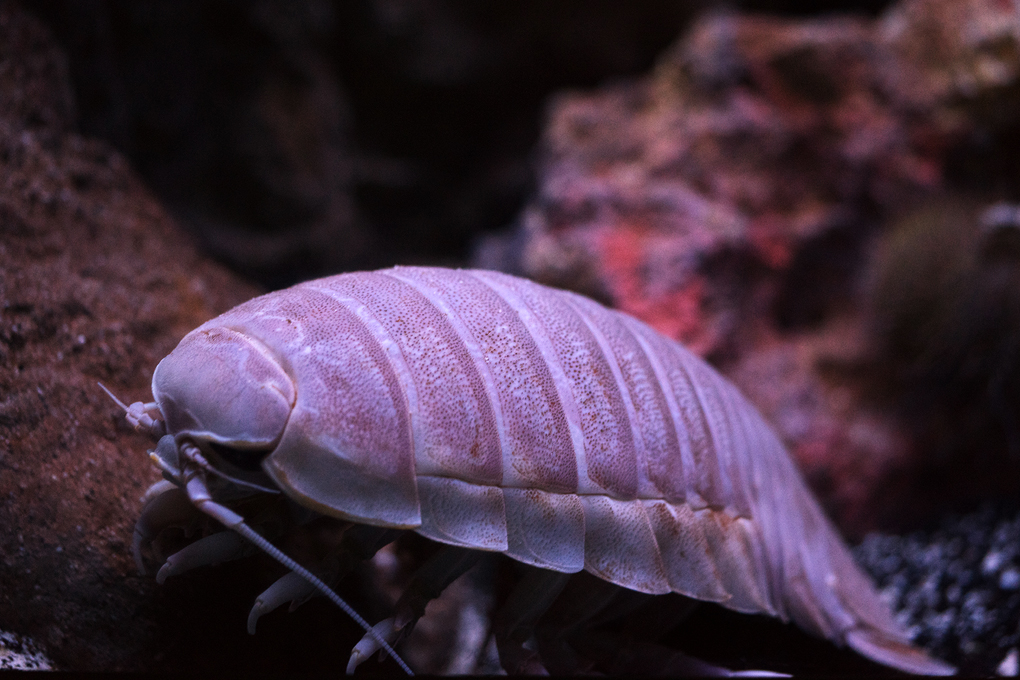Bathynomus gigantea
Fast Facts
- It can roll into a ball to protect its soft underside, similar to pill bugs found on land.
- They have been known to survive for four years without food when kept in a protected environment such as an aquarium.
- When a significant source of food is encountered, giant isopods gorge themselves to the point of compromising their locomotive ability.


Range
Atlantic, Pacific, and Indian oceans

Habitat
500-7,000 feet, on mud or clay ocean floors

Size
16 inches

Nutrition
Carrion
Characteristics
The giant isopod has a hard shell that is divided into segments. This makes it both strong and flexible. They have two antennae pairs and seven pairs of legs. The first pair is modified to bring food to the mouth, where it has four sets of jaws.
Behavior
Their huge size is caused by deep sea gigantism, where deep ocean creatures grow to a much larger size than their shallow-water counterparts. It is believed to help deal with the enormous pressures at depth. Giant isopods feed mainly on carrion, sunken carcasses, but they may also eat slow-moving sea cucumbers and sponges.
Reproduction
Giant isopods keep their eggs in a brood pouch above the stomach and internal organs. The offspring emerge as mancae, or miniature forms of the adults, which are fully developed except for the last pair of legs.

